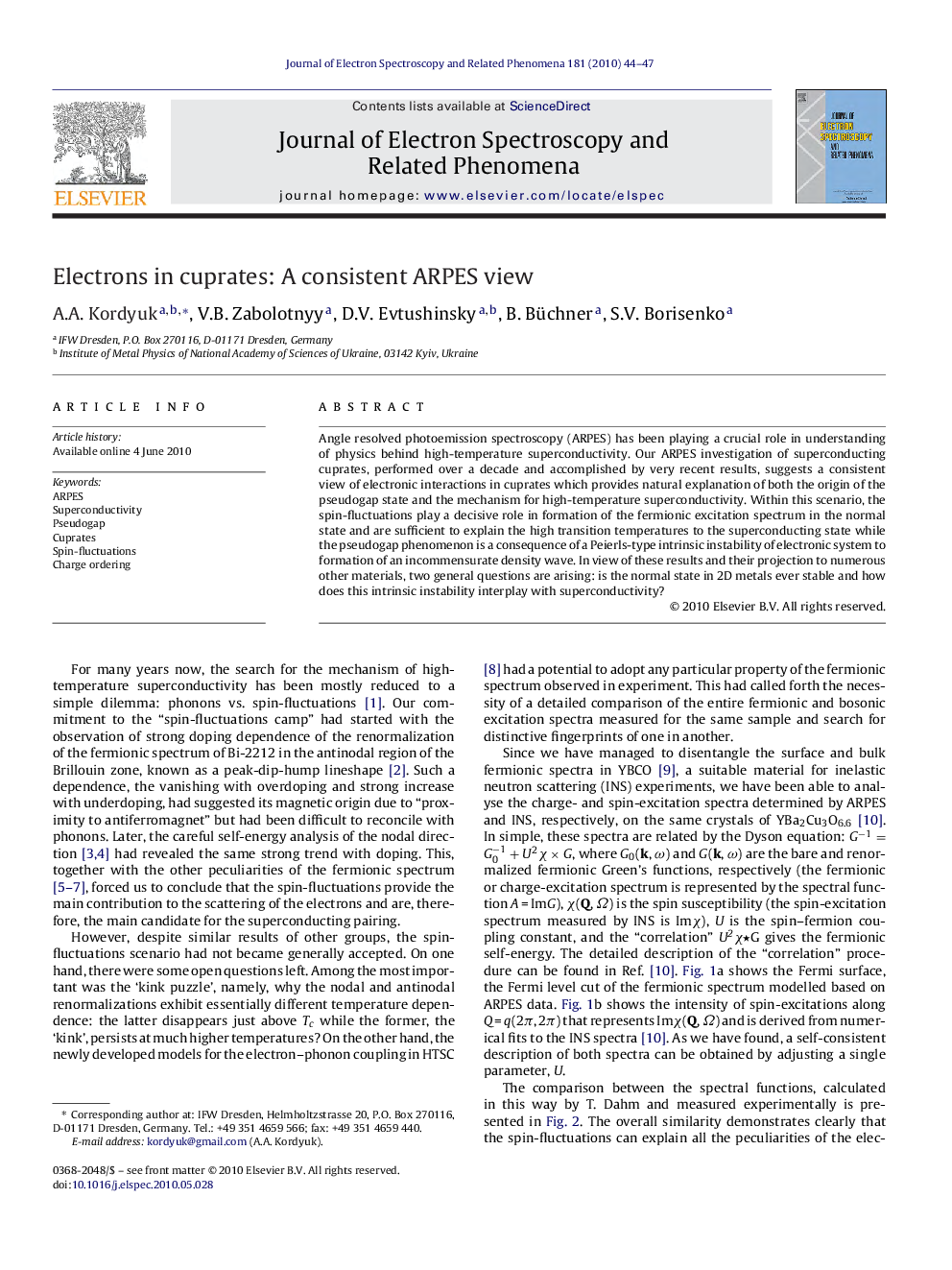| کد مقاله | کد نشریه | سال انتشار | مقاله انگلیسی | نسخه تمام متن |
|---|---|---|---|---|
| 5396263 | 1392280 | 2010 | 4 صفحه PDF | دانلود رایگان |

Angle resolved photoemission spectroscopy (ARPES) has been playing a crucial role in understanding of physics behind high-temperature superconductivity. Our ARPES investigation of superconducting cuprates, performed over a decade and accomplished by very recent results, suggests a consistent view of electronic interactions in cuprates which provides natural explanation of both the origin of the pseudogap state and the mechanism for high-temperature superconductivity. Within this scenario, the spin-fluctuations play a decisive role in formation of the fermionic excitation spectrum in the normal state and are sufficient to explain the high transition temperatures to the superconducting state while the pseudogap phenomenon is a consequence of a Peierls-type intrinsic instability of electronic system to formation of an incommensurate density wave. In view of these results and their projection to numerous other materials, two general questions are arising: is the normal state in 2D metals ever stable and how does this intrinsic instability interplay with superconductivity?
Journal: Journal of Electron Spectroscopy and Related Phenomena - Volume 181, Issue 1, July 2010, Pages 44-47